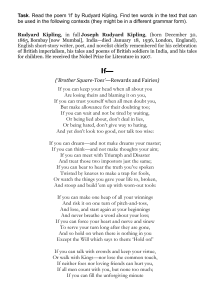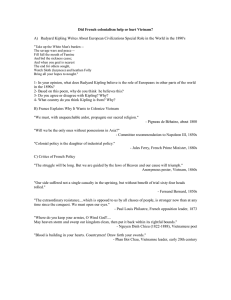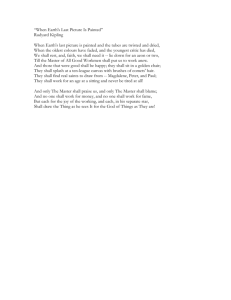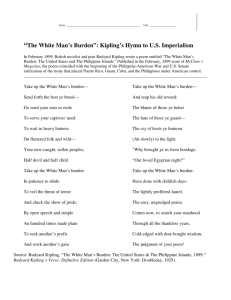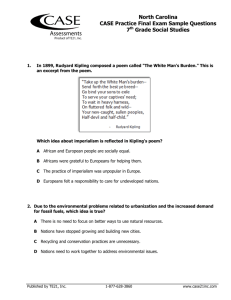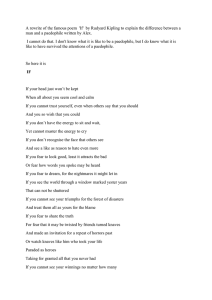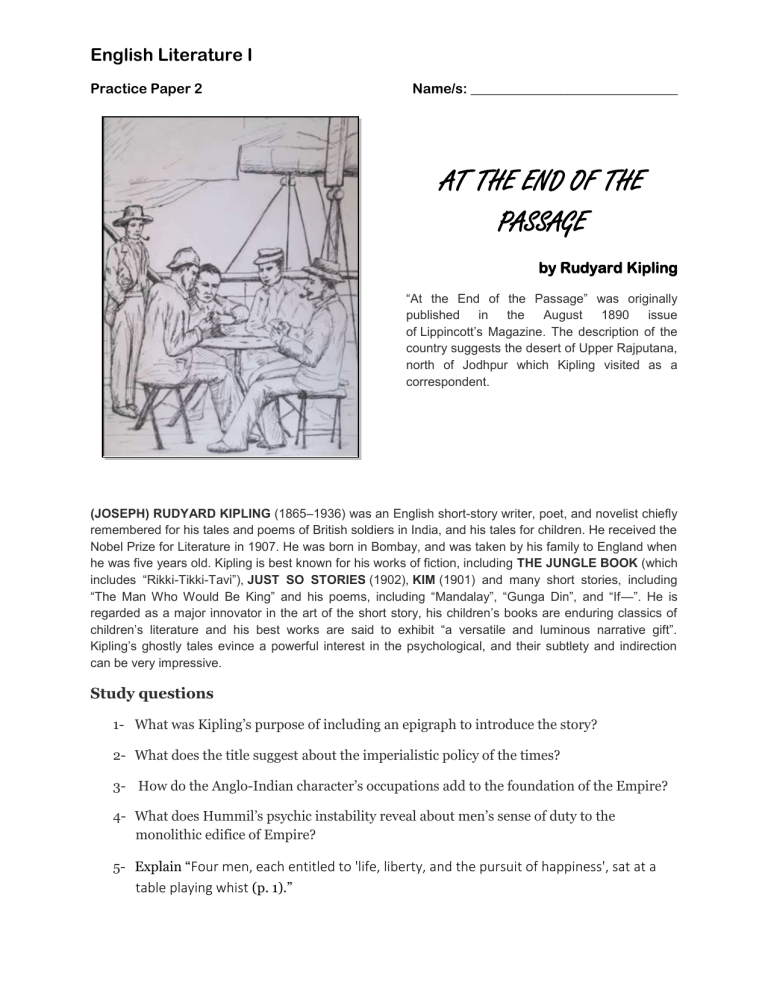
English Literature I Practice Paper 2 Name/s: ______________________________ AT THE END OF THE PASSAGE by Rudyard Kipling “At the End of the Passage” was originally published in the August 1890 issue of Lippincott’s Magazine. The description of the country suggests the desert of Upper Rajputana, north of Jodhpur which Kipling visited as a correspondent. (JOSEPH) RUDYARD KIPLING (1865–1936) was an English short-story writer, poet, and novelist chiefly remembered for his tales and poems of British soldiers in India, and his tales for children. He received the Nobel Prize for Literature in 1907. He was born in Bombay, and was taken by his family to England when he was five years old. Kipling is best known for his works of fiction, including THE JUNGLE BOOK (which includes “Rikki-Tikki-Tavi”), JUST SO STORIES (1902), KIM (1901) and many short stories, including “The Man Who Would Be King” and his poems, including “Mandalay”, “Gunga Din”, and “If—”. He is regarded as a major innovator in the art of the short story, his children’s books are enduring classics of children’s literature and his best works are said to exhibit “a versatile and luminous narrative gift”. Kipling’s ghostly tales evince a powerful interest in the psychological, and their subtlety and indirection can be very impressive. Study questions 1- What was Kipling’s purpose of including an epigraph to introduce the story? 2- What does the title suggest about the imperialistic policy of the times? 3- How do the Anglo-Indian character’s occupations add to the foundation of the Empire? 4- What does Hummil’s psychic instability reveal about men’s sense of duty to the monolithic edifice of Empire? 5- Explain “Four men, each entitled to 'life, liberty, and the pursuit of happiness', sat at a table playing whist (p. 1).” English Literature I Practice Paper 2 Name/s: ______________________________ 6- How do time and space influence the main characters’ identity? 7- Kipling’s story dates from 1890. What is the socio-political context of “At the end of the passage”? 8- The men read some newspaper article and discuss it. What is the author’s position towards the political context of the story? What are the main criticisms he makes to the British Imperialism in India? 9- What happens to Hummil? How does his friend try to help him? 10- Suddenly, the tone of the story changes. The author writes: “Hummil turned on his heel to face the echoing desolation of his bungalow, and the first thing he saw standing in the verandah was the figure of himself. He had met a similar apparition once before, when he was suffering from overwork and the strain of the hot weather (p. 16).” What sort of short story is “At the End of the Passage”? Trace some characteristics of this genre in this story. 11. What does the end of the story suggest about Hummil’s death?
